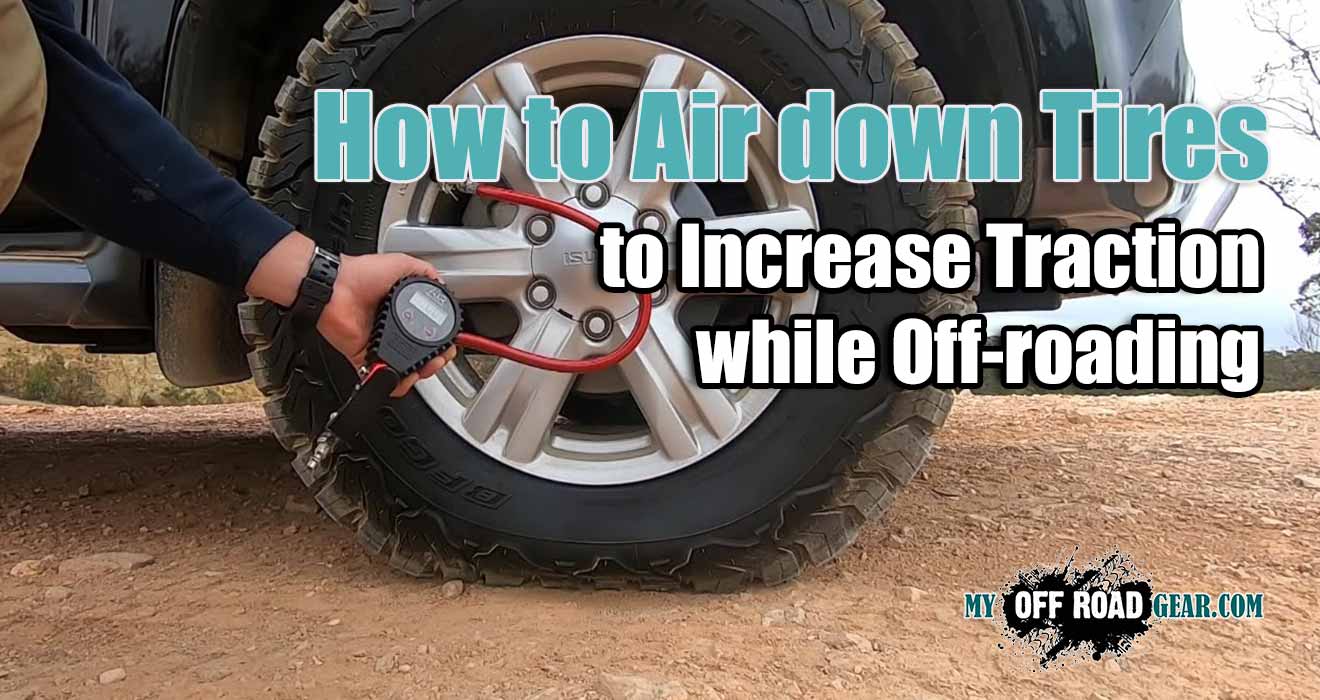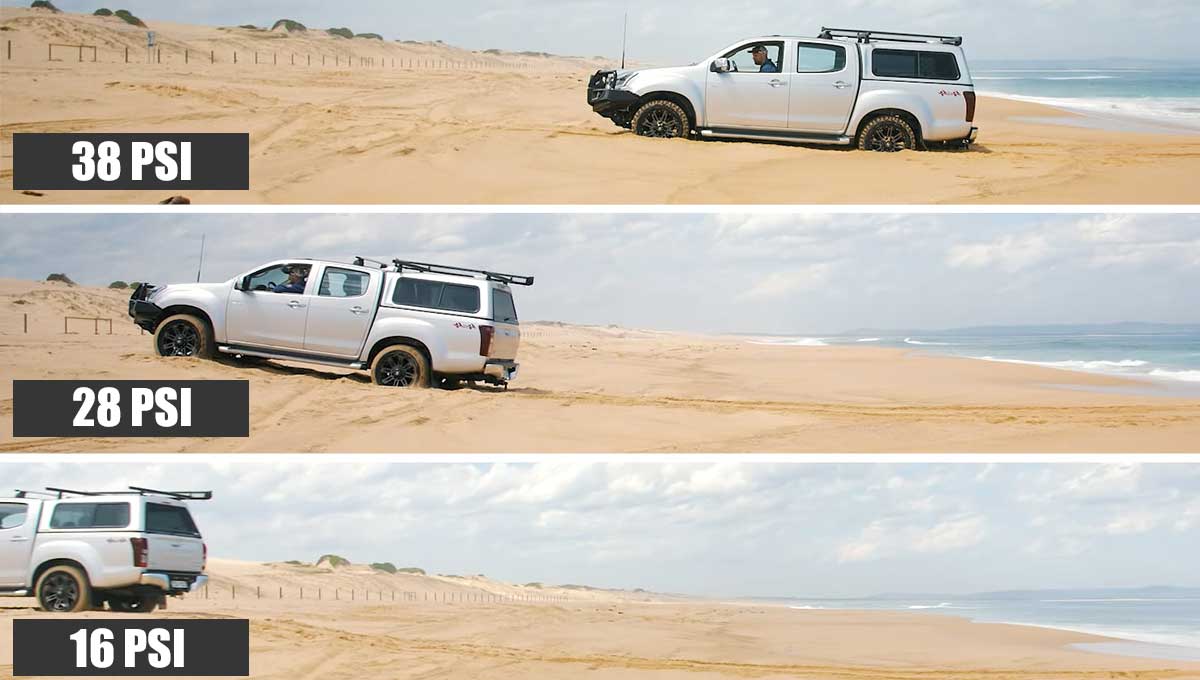The term airing down simply means the process of lowering the air pressure in the tires to improve traction off-road.
Generally, when driving Jeeps, SUVs, or trucks on-road, as with most other vehicles, it is preferable to have the tires inflated to maximum capacity with optimum air pressure to improve performance on road. However, when driving off-road, the same rules don’t always apply.
Driving off-road means the terrain you will be negotiating may be hilly, sandy, snowy, mountainous, and swampy – anything but your regular smoothly paved highways. In such conditions, a tire low on air can often give you better traction.
Airing down the tires has to be a decision you make based on the kind of vehicle you drive. While you can ask around to see what pressure your off-road buddies are running on, it is always better to figure out your own air pressure for trail use. Different types of tires flex differently, and different running gear can make a huge difference in the weight of your vehicle. So unless someone you know has exactly the same vehicle as you do – same tires, overall weight, and all the other specifications – don’t imitate their practices. Before airing down the tires make sure that you put in your trunk a portable air compressor.
- Airing Down Advantages
There is a definite advantage of airing down on both sand and rocks. When driving on rocks, if you choose against it, you will realize that there is almost no flex in the sidewall of your tires. However, by airing down you will greatly increase the contact patch between the tires and the rocks and your rig will positively grab the rocks. You have to be cautious against removing too much air because then the traction will be great, but you risk popping the bead. The sidewall also becomes very vulnerable and theground clearance is greatly reduced.When on the sand, if your rig is leaving behind washboard tracks it requires some airing down. A nice and flat set of tracks is indicative of good air pressure – the vehicle is floating on the sand instead of digging in.
-
Types of Tires to Use
In the case of mud, there are two schools of thought, both of which work. The first option is to use tall, skinny tires, which grab at the bottom of the mud to keep the Jeep moving. That is of course if the mud has a bottom, to begin with! Airing down will lower the ground clearance and defeat the purpose of having thin tires. So stay aired up all the way.
The other option is to use very wide tires. Airing down these tires will mean they hydroplane across the top of the mud and keep you moving. Bead locks are an absolute must on these if you don’t want the tires to pop.
So if you are still asking the question, “What is airing down all about and what pressure should I run my rig on?” the answer has to come from you. It is entirely dependent on the weight of your vehicle, the tire size, and the terrain you plan on running on.
To find out more information read on Tire Inflation Guide for Serious Off-roading.




Add Comment